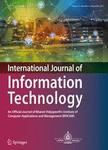版权所有:内蒙古大学图书馆 技术提供:维普资讯• 智图
内蒙古自治区呼和浩特市赛罕区大学西街235号 邮编: 010021

作者机构:Department of CSE-AIML Malla Reddy Engineering College (Autonomous) Medchal Secunderabad Malkajgiri (Dist) India Ellenki College of Engineering and Technology (ECET) Patelguda (v) Ameenpur (m) Sangareddy (D) Hyderabad Telangana India Department of Information Technology Sri Sivasubramaniya Nadar College of Engineering Chennai India Department of Electronics and Communication Engineering Saveetha School of Engineering Saveetha Institute of Medical and Technical Sciences Saveetha University Chennai India Department of Computer Science and Engineering Saveetha School of Engineering Saveetha Institute of Medical and Technical Sciences Saveetha University Chennai India
出 版 物:《International Journal of Information Technology (Singapore)》 (Int. J. Inf. Technol.)
年 卷 期:2025年第17卷第2期
页 面:959-967页
主 题:American zebra optimization algorithm (AZOA) BotNet attack detection Extreme learning machine (ELM) Recurrent neural network (RNN) Software-defined network (SDN)
摘 要:Software-defined networking (SDN) offers centralized control over large-scale networks, enhancing flexibility and enabling tailored network applications. However, SDN introduces new security vulnerabilities, including the risk of botnet attacks, which can compromise systems and steal data. This paper proposes a novel approach for detecting botnet attacks in SDN environments by leveraging a hybrid model that integrates recurrent neural networks (RNNs) and extreme learning machines (ELMs). The proposed method utilizes RNNs for feature learning and ELMs for classification, with the American zebra optimization algorithm (AZOA) optimizing ELM weights. This hybrid SSRNN-ELM (supervised subset recurrent neural network—extreme learning machine) approach is evaluated using N-BaIoT dataset and performance metrics, demonstrating effective detection of complex botnet attacks with high accuracy. The results demonstrate that the hybrid model effectively identifies complex botnet attacks, achieving a detection accuracy of 96.60%. The integration of recurrent neural networks (RNNs) for feature learning and extreme learning machines (ELMs) for classification, along with optimization by the American zebra optimization algorithm (AZOA), significantly improves detection performance as compared to the recent existing studies. © Bharati Vidyapeeth s Institute of Computer Applications and Management 2025.